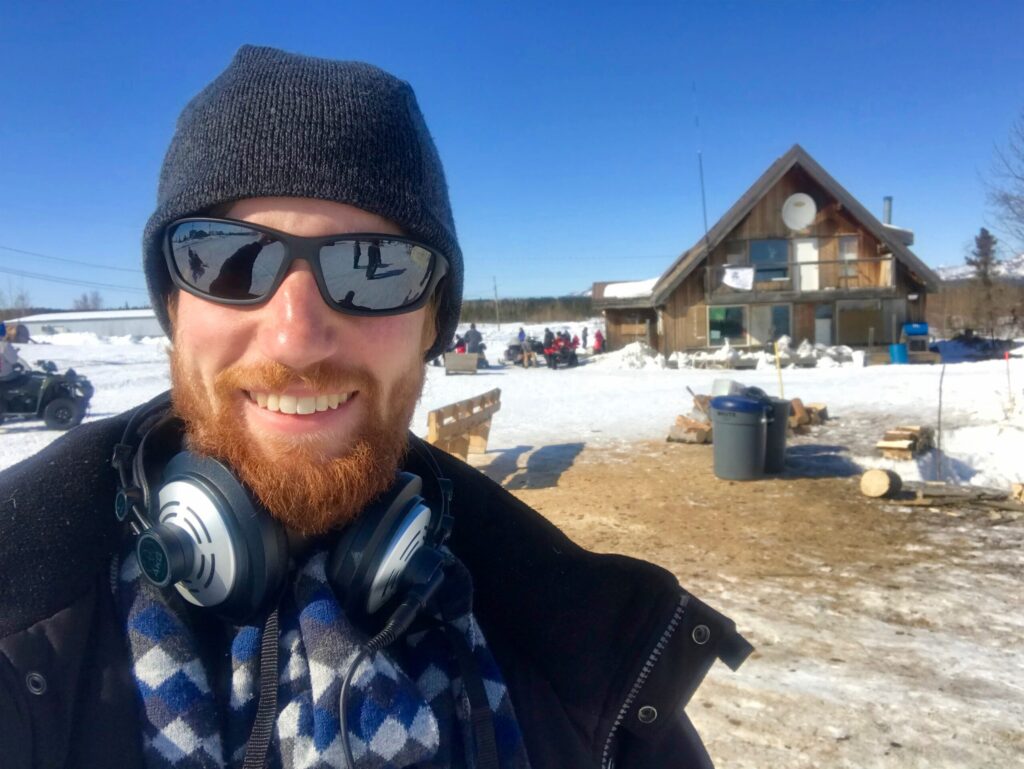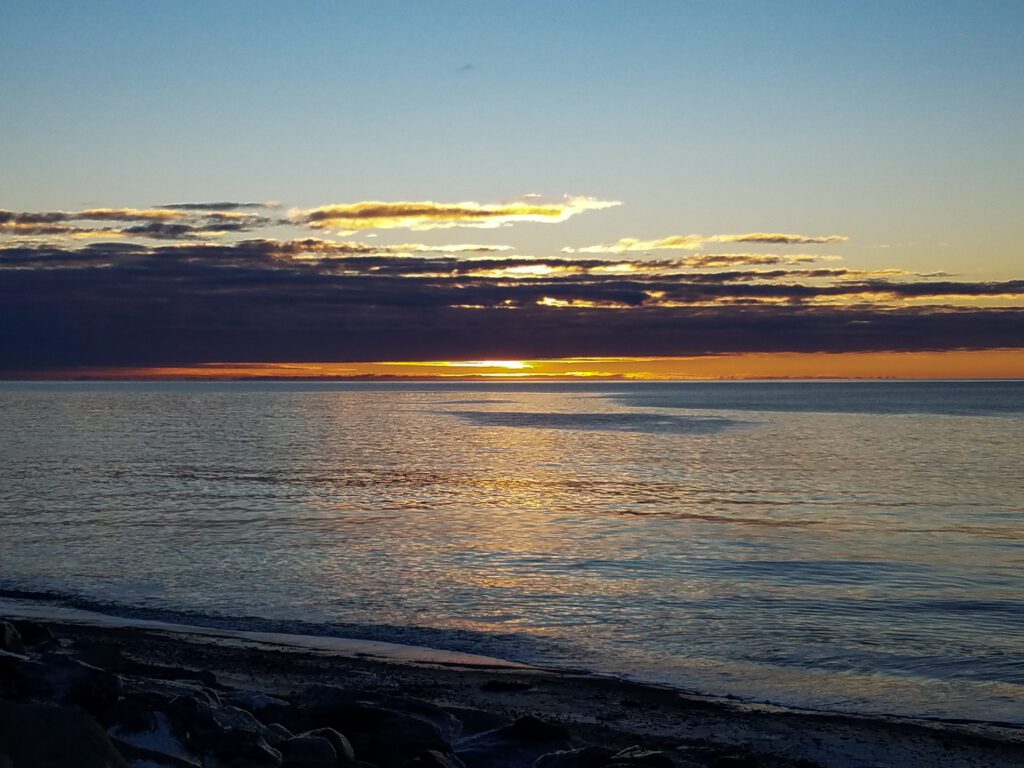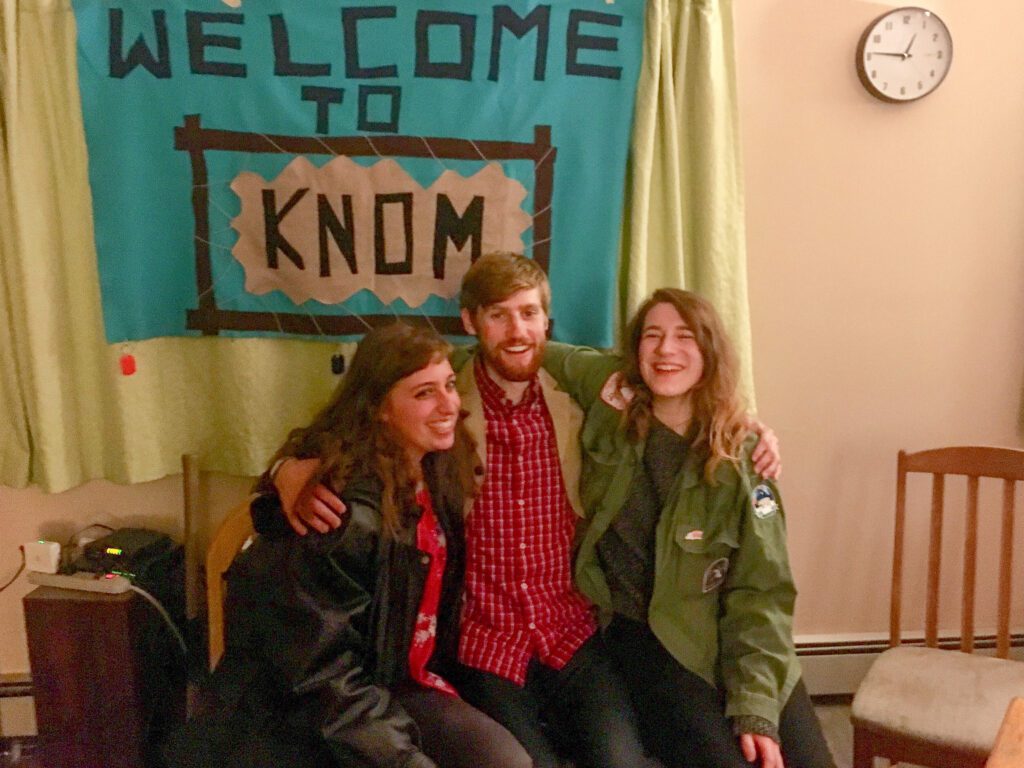I just came back from first mic’ing my last 9am Iditarod update. The lead mushers were out of White Mountain this morning, finishing up a mandatory eight hour rest at the second-to-last checkpoint on the trail before they cross the finish line under the burled arch in Nome. In a few hours, maybe as early as five o’clock this afternoon, a huge crowd will have assembled to see a champion crowned in the 40th annual running of “The Last Great Race.” Iditarod and “race season” is an exciting time to be at KNOM, and it’s an experience that, two years running, has been the highlight of my volunteer year.
Dog mushing is more than just a sport in Alaska. Here, and in other circumpolar parts of the world, it’s been a mode of transportation and a central pillar of survival for centuries. But today, it’s a highly competitive mixture of wilderness survival, athleticism, and (odd as it sounds) dog breeding. With races like the Kuskokwim 300, the Yukon Quest, and the Iditarod, it’s also become an incredible distillation of talent and training, a major sporting event with it’s own cast of characters: big-name champs, dark horses, hungry rookies, cocky young mushers with something to prove, and grizzled veterans. Where else can you see septuagenarians leading the same race that, a few days later, may see its youngest winner in history?
When Iditarod comes around, the whole air of the KNOM station changes. Everyone has a role to play in our extensive coverage of the race. We have regular updates at 9am, 12pm, 5pm, and 8pm. Each update usually has a pair of KNOMers – some staff, some volunteers – reporting on the happenings of the race. We read the leader board, dissect the trail, look at relevant racer history. You still have other work to do, sure, but you get to really geek out and obsess over the race. It’s part of your job. And thanks to the amazing work done by Laureli Kinneen, KNOM’s news director and on the trail reporter, you get fresh interviews from mushers and other interesting characters along the trail. It’s all available on KNOM’s On the Trail blog, and it’s some of the best race coverage I’ve seen.
[youtube http://www.youtube.com/watch?v=2qScEyDF–c]
By the time the racers get to Nome – usually about 8 days, maybe the Tuesday afternoon after the race starts in Anchorage (or, as happened last year, an incredible record-breaking pace that brought John Baker to the finish Tuesday morning … see the video above) – you know who these mushers are. You’ve shared their story, learned about their dogs’ health, sussed out their strategies. You know which mushers are riding the sled, which ones are ski-poling along side to give their dogs a bit of extra push, and which ones are jumping off the sled and jogging/sprinting alongside and literally pulling their own weight. Laureli’s reporting lets you hear them exhaustedly coming into a checkpoint, excitedly making up time on the leader, playing it cool as they follow a careful strategy, or – if you’re Hugh Neff or Dallas Seavey – go on and on about how awesome they are. In bringing this race to listeners, you help bring these personalities to life on the air. And then, when the mushers come to Nome, we go into 24 hour mode: working 12 hour shifts, KNOM has round-the-clock coverage of the first 30 mushers who cross the finish line. You may be the reporter on Front Street, ready to ask good questions to musher(s) who come in; you may be tasked with driving the station truck, the “Spotter Vehicle,” out to the ice-choked edge of the road to report live on the musher’s last 3 miles into Nome; or you may be the person in Studio A, “on the board” and orchestrating the whole thing on the air. It’s an exciting and adrenaline-soaked end to an amazing race.
I could go on and on about the Iditarod. About how I knew nothing of dog mushing before KNOM, and now know what a wheel dog is, use snacking as a verb in ways that I never thought possible, and have a huge list of favorite mushers to follow. I could write about the station-wide obsession that has you following the leader board and constantly refreshing Twitter, blogs, and the official race standings for updates. I could try to illustrate just how cool it is to be find yourself having conversations with co-workers and just swapping Iditarod stories and news. And I could try to convey the general atmosphere as Nome goes into carnival mode and becomes packed with fans, tourists, mushers, and competitors for a week or so, where you’ll run into the Micheal Jordan of mushing just walking down the street, and end up having a roadside burger with him (happened to me with Martin Buser last year!).
In short, I could try to explain what an awesome time Iditarod is. But the only way to really know is to experience it for yourself.







